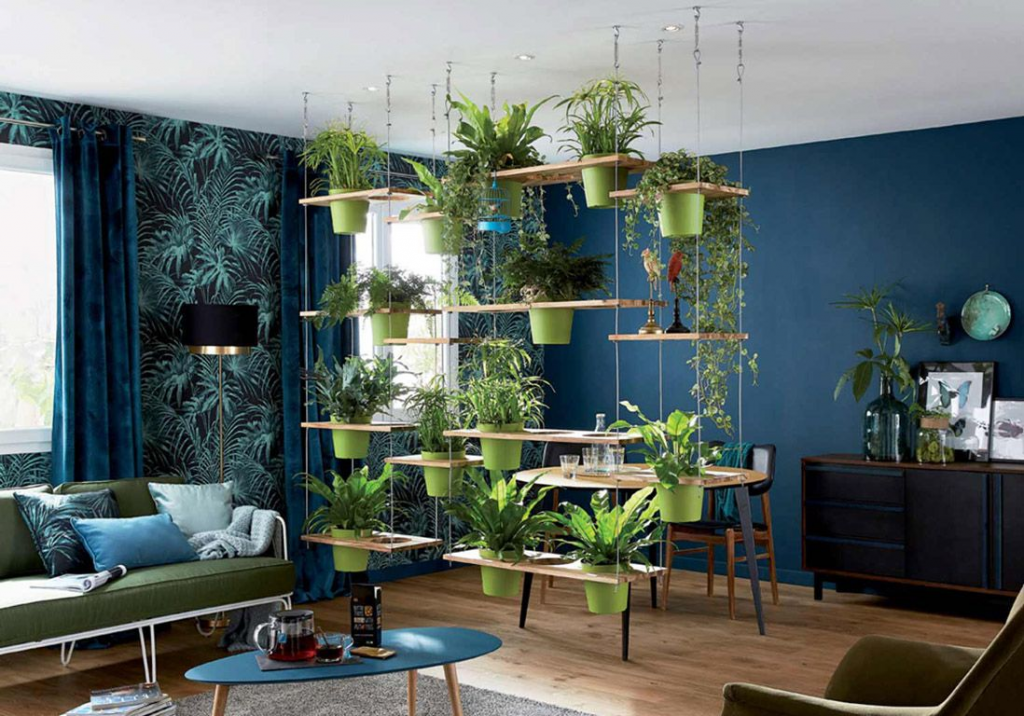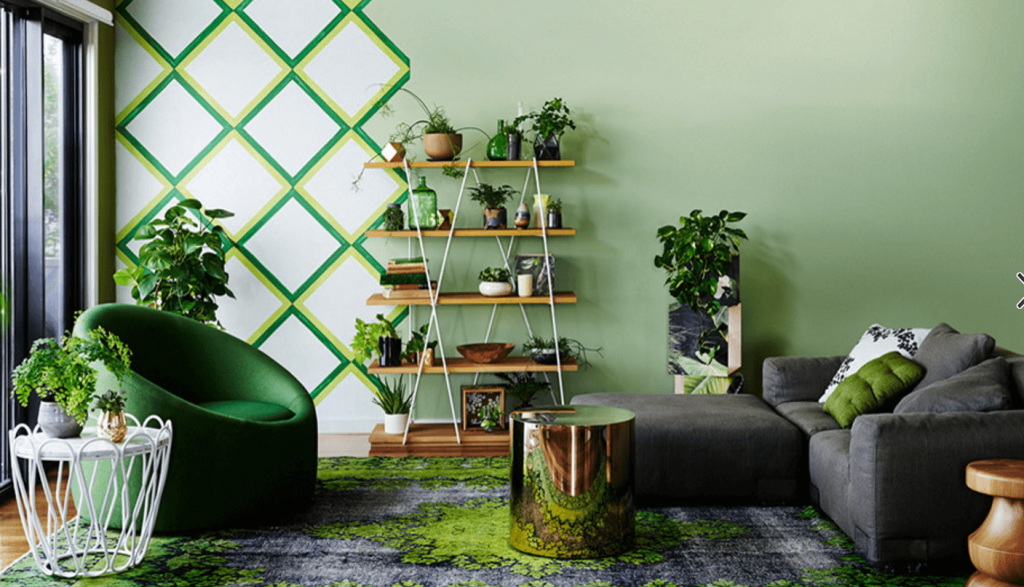There’s an undeniable charm that houseplants add to a home. They bring a breath of fresh air, quite literally, and provide a splash of vibrant color against the static backdrop of our living spaces. But it’s not just about having indoor plants; it’s about presenting them in creative, eye-catching ways that complement your home’s decor. In this article, we’ll explore some of the best indoor houseplant decor ideas that will transform your living rooms and beyond. Whether for small spaces or grandiose halls, these decorating ideas are more than just placing a pot on a shelf; they embody a lifestyle of embracing nature indoors.
Creative Ways to Display Houseplants in Your Living Space
Your living room, the heart of social interaction in your home, is a perfect place to start integrating houseplants. A single, bold Monstera in an equally impressive planter can become a living sculpture that guests won’t stop admiring. For those fond of DIY projects, pallet planters mounted on walls offer a rustic, cozy appeal. Not only do these displays look great, but they can also enhance the ambiance of your living spaces.
The Tranquil Bedroom: Air-Purifying Picks for a Restful Sleep
Bedroom houseplant decor should focus on tranquility and air quality. Some of the best indoor plants for this sanctuary include lavender and jasmine, known for their soothing scents. For maintenance and space saving, try a stylish hanging planter by the window; this will also help with the plants’ sunlight needs and does not concede floor space.
The Functional Kitchen: Edible Herbs and Hanging Greens
The kitchen is a hub of practicality, and houseplant decor here should serve a dual purpose. Aromatic herbs like basil and mint are not just stylish indoor plants; they’re extremely handy for cooking. Display them in Mason jar wall holders or simple pot racks above the sink where they’ll get plenty of light and be within easy reach when you need a sprig or two for your recipes.

Unique Vessels: Thinking Beyond the Traditional Pot
Getting creative with what holds your plants is a great way to personalize your decor. No need to settle for the standard terracotta when you could instead opt for quirky teacups, vintage cans, or even glass globes that call attention to your greenery. Here are some great ideas to get your creative juices flowing:
- Bookshelf biotopes: Utilize clear vases or old fish bowls to create miniature ecosystems.
- Leather sling hangers: For a modern twist, these stylish units make even the simplest pots look fashionable.
Vertical Gardens: Maximizing Space with Style
If square footage is at a premium, think vertically. A DIY plant wall can offer a lush and vibrant focal point in a room, and is easier to create than you might think. Start with a frame, add some netting, and then select a variety of small plants that can be inserted into the pockets. Not only is this a clever decorating idea, but it’s also a practical solution for indoor gardens in urban environments.
Floating Shelves: Elevating Your Plant Display
Floating shelves can do wonders for minimalist interiors. When used specifically for plants, they make for an airy, uncluttered presentation that still showcases your favorite specimens. Construct a stepped arrangement of shelves on one wall to turn your houseplant collection into an evolving work of art over time.
Seasonal Plant Décor Tips
As seasons change, so should your indoor plant displays. Spring might call for blooming Azaleas, while fall could see the inclusion of colorful Crotons. Seasonal rotation is not just fun; it keeps your decor looking fresh and vibrant throughout the year. The seasonal change is also a great way to engage with your houseplants and learn more about their growth cycles and needs.

Themed Displays for Holidays and Special Occasions
Just as a beautifully set table can celebrate an occasion, so too can your plant displays. Incorporating seasonal decor items or themed accessories can turn your houseplants into part of the festivities. Think themed plant stakes for Halloween, or red and green potting for the Christmas season.
Smart Plant Placement for Optimal Growth and Aesthetics
Strategic placement ensures your plants not only look good but grow well too. Use a table that shows optimal plant positioning based on light accessibility in your home, making sure your plant’s needs are met:
| Plant | Light Requirement | Best Placement |
|---|---|---|
| Ferns | Indirect Light | Shelves away from windows |
| Succulents | Bright Light | South-facing window sills |
| Philodendron | Low Light | Interior rooms or office spaces |
Achieving Balance and Symmetry in Arrangement
Balancing your houseplant decor is essential for a harmonious interior. Consider the scale and proportion of your plants in relation to furniture and room size. Grouping plants of various heights can create dynamic displays, while symmetrical arrangements on either side of a mantelpiece or bed will give a sense of order and cohesiveness.

Conclusion
Embracing houseplant decor is more than just adding splashes of green around your home. It’s about creating mini ecosystems that engage the senses, it’s getting creative with display options that reflect your style, and it’s about caring for another living entity that, in turn, cares for you. The right indoor plants and decor can turn any house into a living home, and the ideas presented here are just the starting point for those willing to make this green transformation.
FAQ
Q1: How do I choose houseplants that will thrive in low-light areas of my home?
A1: Opt for shade-tolerant plants like snake plants, pothos, or ferns that require minimal sunlight. Check their tags for light requirements when purchasing, or ask staff at your local garden center for advice on the best plants for the darker areas of your home.
Q2: How often should I change or rotate my houseplant decor?
A2: It largely depends on the plant’s growth and the seasons. Rotate or refresh your decor every few months or with seasonal changes to keep things interesting for both you and the plants as different plants can benefit from different positions at times.
Q3: Can houseplants help improve indoor air quality?
A3: Yes, many houseplants like spider plants, peace lilies, and rubber plants are known to purify air by filtering out toxins. They can contribute to a healthier home environment by improving indoor air quality.
Q4: What are some low-maintenance houseplants for those new to plant decor?
A4: Succulents, cacti, and ZZ plants are great options for beginners due to their low care requirements. These plants are forgiving and can survive with minimal attention, making them an ideal choice for those just starting their plant parenting journey.
Q5: Are there any innovative technologies or apps to help take care of indoor plants?
A5: Yes, there are several apps that can remind you when to water or fertilize your plants, and smart plant monitors can assess soil moisture and sunlight. This tech can be particularly helpful for those with busy lifestyles or for more demanding plant species.